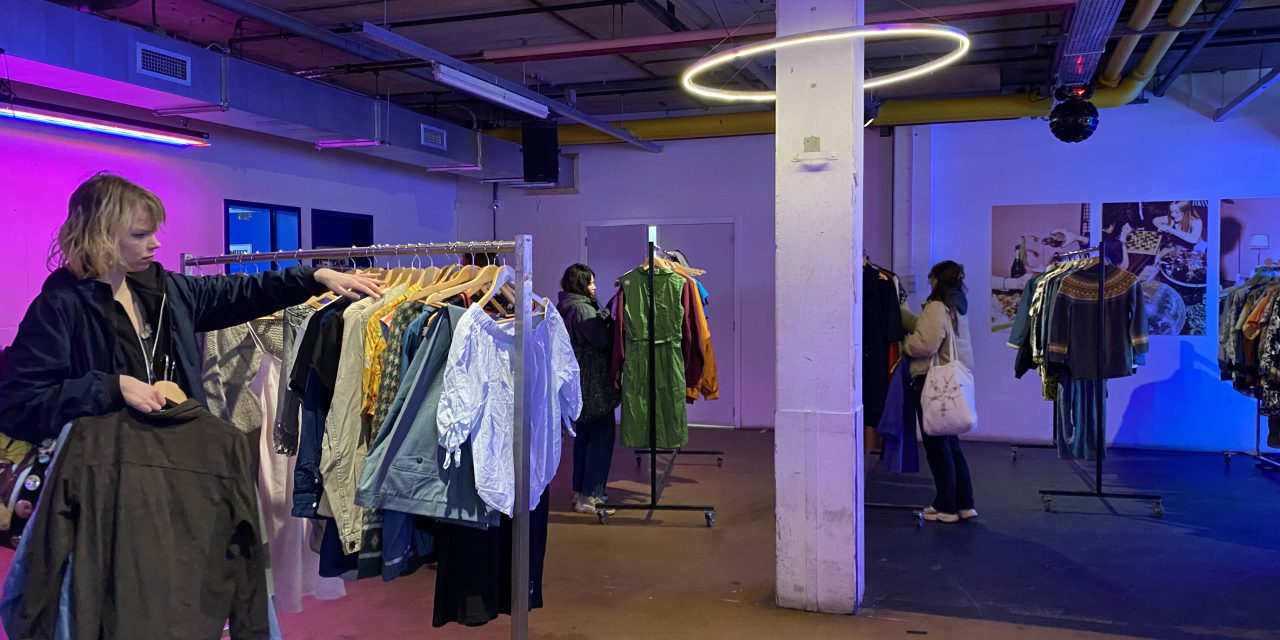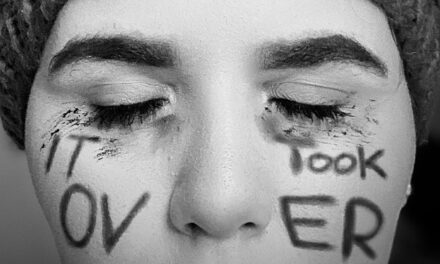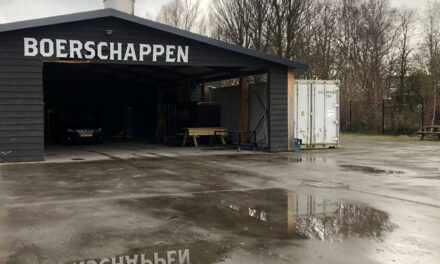The alternative ways of consuming fashion in sustainable ways are growing. It could be seen as a counteraction to the capitalist consumerism that fast fashion symbolizes today. In the Netherlands clothing swaps have become more common and can now be seen as in in cities all around the country.
On a rainy and stormy Sunday, the inside of the vegan restaurant Karma Kebab in Utrecht has been transformed into a vibrant clothing swap market. The organization Holy Swap! is hosting their first event of the year. Funky music is played by a DJ in a glitter skirt as clothes on racks get swooshed into the neon-lighted venue whilst people queue in line with stuffed Ikea-bags on their shoulders.
Sustainable business student Franscesca Martins is holding a stack of clothing on her arm as she looks through the racks. She’s at her first clothing swap ever, and on the hunt for a new coat.
“Vintage shopping has become expensive, so this is cheaper. It’s also a great way to get rid of your own stuff at the same time”, says Martins.
Enlarge

Nathalie Koskinen
The system of this particular clothing swap is fairly easy; participants turn-in their clothing (a maximum amount of 8 pieces), the clothes get checked by the swap-team and then valued in tokens. The higher the quality, or better the brand, the more tokens you earn. The participants can then look around at all other pieces and pay with their collected tokens. The clothes are marked with its worth; green marker equals one token, red equals three, and blue five.
“I think I would go to a clothing swap anywhere, but this cool venue and event motivates me to go even more”, says Martins.
In the Netherlands the production of raw materials for Dutch textile consumption requires 5 trillion liters of water annually. A majority of the CO2 emissions during the process, occur during production, before the product hasn’t reach the consumer, and this is the problem that Holy Swap! wanna solve.
According to founder Danny Schüttler, the sustainable fashion industry is neither accessible, affordable or attractive at this point. He wants to keep people off the shopping streets and bring them and their products together in trendy places and stimulate local reuse.
“Our mission is to get people to stop craving more and new stuff, and already celebrate the things you have by giving them new life. It’s important that the venue we work with shares our values. We also always ask the venue if they can add something playful to the event, for example games or music”, says Schüttler.
Enlarge
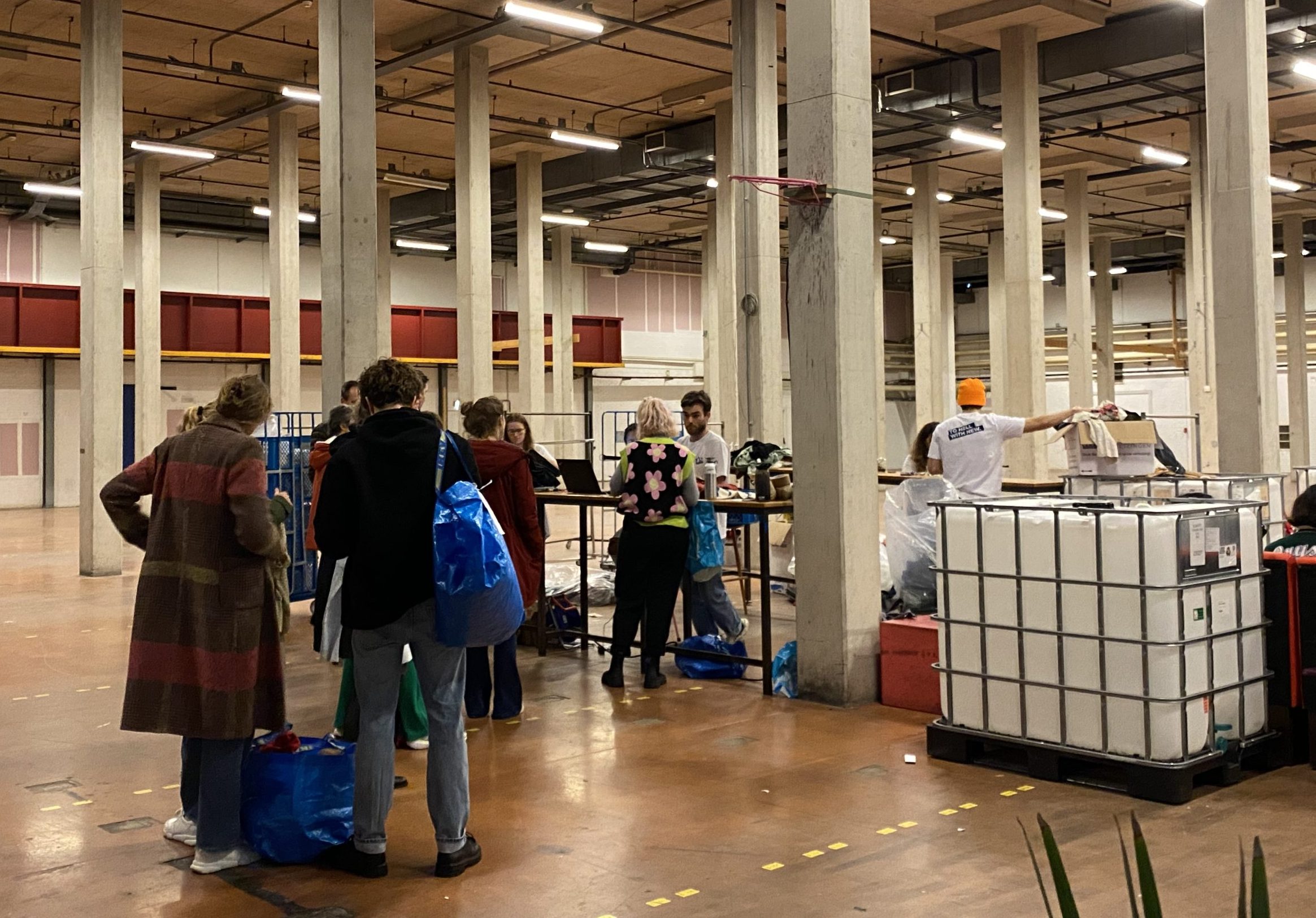
As much as this event is about the clothes, it really does seem to be a place for people to come together and enjoy their afternoon. At a wooden table in the big hall, a happy group of three is drinking bloody marys, laughing and trying on their new finds.
“That looks so good on you!”, says Laurel Rohloff to Jan Westerveel, who’s posing in a summery shirt with yellow flowers.
When asked if they usually visit clothing swaps, both Westerveel and Ara Salsabila point at their friend Laurel Rohloff.
“I came because of her…and the drinks”, says Salsabila with a smile on her face.
Rohloff is an enthusiastic clothing swapper, who also organizes her own local clothing swaps in her neighborhood twice a year.
“I try to not buy anything new anymore, and thrifting has become too overpriced”, says Rohloff, while she asks her friends if the top she’s trying on is “too 2014”.
It is clear which audience rules this event; young (mostly female) adults who are interested in a sustainable lifestyle.
Enlarge
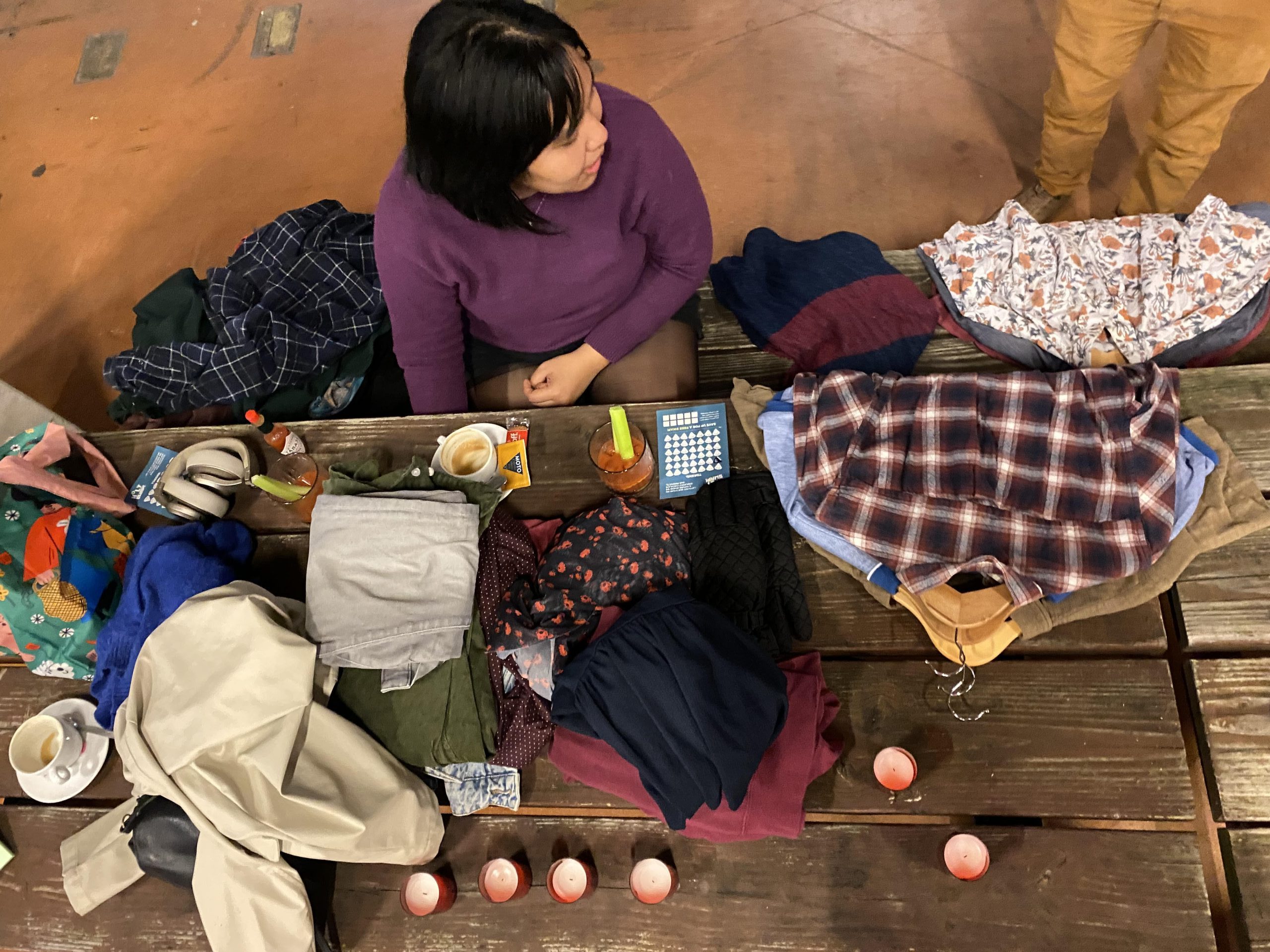
Nathalie Koskinen
Fun, easy and cheap
But, what really differs clothing swaps from thrifting or buying second hand online?
“I don’t see that buying second hand or sustainable brands is the long-term solution. By swapping, it creates a closed circular economy where we prevent new production and waste in both the supply-side and demand-side. I believe this is the long-term solution.” says Schuttler.
How do you keep people interested in clothing swaps beyond it being a trend?
“It really depends on who’s doing the swaps and how they do it. We have to make sustainable living simpler, fun and more affordable for it to reach the masses.”
